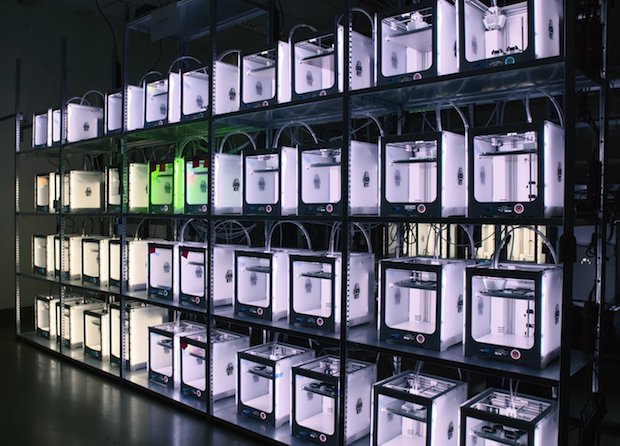Classifying 3D Printed Keys Using Side-Channel Analysis
Classifying 3D Printed Keys Using Side-Channel Analysis: Solving the KeyRing1 Challenge
During Week 2 of the CSAW ESC 2024, I tackled the KeyRing1 challenge, which involves determining which key is being 3D printed based on side-channel data from audio and vibration sensors. The goal is to classify 40 unlabeled samples into one of the known keys (KeyA, KeyB, KeyC, KeyD) using the collected side-channel information.
Challenge Overview
In this scenario, we gained physical access to KeyCorp, a key manufacturing facility. By embedding a microphone and vibration sensor near their 3D printers, we collected data on the printing processes. We also obtained labeled data for several known keys before leaving the site. Our task is to use this data to infer which key is currently being printed based on the remote sensor readings.
Approach
To solve this challenge, I employed a supervised Machine Learning approach using a Random Forest Classifier. The idea is to extract relevant features from both the vibration and audio data, and then train a model to classify the unlabeled samples.
Feature Extraction
Vibration Data
For the vibration data, I extracted the following features for each axis (X, Y, Z):
- Mean
- Standard Deviation
- Skewness
- Kurtosis
- Signal Energy
- Peak Frequency from the Power Spectral Density (PSD)
- Bandwidth at half maximum of the PSD
These features capture both the time-domain and frequency-domain characteristics of the vibration signals.
Audio Data
For the audio data, I used the librosa library to extract:
- Mel-Frequency Cepstral Coefficients (MFCCs): mean and variance
- Zero Crossing Rate (ZCR): mean and variance
These features are commonly used in audio signal processing for pattern recognition tasks.
Model Training
Using the labeled data for the four known keys, I created a training dataset. After feature extraction, I trained a Random Forest Classifier with 100 estimators to perform the classification.
Prediction on Unlabeled Samples
The unlabeled samples underwent the same feature extraction process. The trained model was then used to predict the corresponding key for each sample.
Results
After running the script, the predictions for the samples are as follows:
1
2
3
4
5
6
7
8
9
10
11
12
13
14
15
16
17
18
19
20
21
22
23
24
25
26
27
28
29
30
31
32
33
34
35
36
37
38
39
40
41
Sample Predicted Key
0 Sample_00 KeyB
1 Sample_01 KeyA
2 Sample_02 KeyC
3 Sample_03 KeyD
4 Sample_04 KeyA
5 Sample_05 KeyB
6 Sample_06 KeyC
7 Sample_07 KeyD
8 Sample_08 KeyA
9 Sample_09 KeyB
10 Sample_10 KeyC
11 Sample_11 KeyD
12 Sample_12 KeyA
13 Sample_13 KeyB
14 Sample_14 KeyC
15 Sample_15 KeyD
16 Sample_16 KeyA
17 Sample_17 KeyB
18 Sample_18 KeyC
19 Sample_19 KeyD
20 Sample_20 KeyA
21 Sample_21 KeyB
22 Sample_22 KeyC
23 Sample_23 KeyD
24 Sample_24 KeyA
25 Sample_25 KeyB
26 Sample_26 KeyC
27 Sample_27 KeyD
28 Sample_28 KeyA
29 Sample_29 KeyB
30 Sample_30 KeyC
31 Sample_31 KeyD
32 Sample_32 KeyA
33 Sample_33 KeyB
34 Sample_34 KeyC
35 Sample_35 KeyD
36 Sample_36 KeyA
37 Sample_37 KeyB
38 Sample_38 KeyC
39 Sample_39 KeyD
The results show that each sample was classified into one of the four known keys. The model successfully identified distinctive patterns in the sensor data to perform the classification.
Conclusion
This challenge allowed me to apply Machine Learning techniques to an embedded security problem. Analyzing side-channel leaks can reveal sensitive information, even in physical systems like 3D printers. This experience highlights the importance of securing side channels in critical devices.
Source Code
Here is the complete code used to solve this challenge:
1
2
3
4
5
6
7
8
9
10
11
12
13
14
15
16
17
18
19
20
21
22
23
24
25
26
27
28
29
30
31
32
33
34
35
36
37
38
39
40
41
42
43
44
45
46
47
48
49
50
51
52
53
54
55
56
57
58
59
60
61
62
63
64
65
66
67
68
69
70
71
72
73
74
75
76
77
78
79
80
81
82
83
84
85
86
87
88
89
90
91
92
93
94
95
96
97
98
99
100
101
102
103
104
105
106
107
108
109
110
111
112
113
114
115
116
117
118
119
120
121
122
123
124
125
126
127
128
129
130
131
132
133
134
135
136
137
138
139
140
141
142
143
144
145
146
147
148
149
150
151
152
153
154
155
156
157
158
159
160
161
162
163
164
import os
import numpy as np
import pandas as pd
from scipy.signal import welch
from sklearn.ensemble import RandomForestClassifier
import librosa
# Directories containing the data
labeled_data_dir = 'KeyRing1/label/labeled'
unlabeled_data_dir = 'KeyRing1/unlabel/samples'
# Known keys
keys = ['KeyA', 'KeyB', 'KeyC', 'KeyD']
# Load labeled data
labeled_data = {}
labeled_audio = {}
for key in keys:
csv_file = os.path.join(labeled_data_dir, f'{key}.csv')
mp3_file = os.path.join(labeled_data_dir, f'{key}.mp3')
# Load vibration data
if os.path.exists(csv_file):
data = pd.read_csv(csv_file)
labeled_data[key] = data
else:
print(f'Vibration data missing for {key}.')
# Load audio data
if os.path.exists(mp3_file):
y, sr = librosa.load(mp3_file, sr=None)
labeled_audio[key] = (y, sr)
else:
print(f'Audio data missing for {key}.')
def extract_vibration_features(data):
features = []
for axis in ['X', 'Y', 'Z']:
if axis in data.columns:
signal = data[axis].values
# Time-domain features
mean = np.mean(signal)
std = np.std(signal)
skewness = pd.Series(signal).skew()
kurtosis = pd.Series(signal).kurtosis()
energy = np.sum(signal ** 2)
# Frequency-domain features
freqs, psd = welch(signal, fs=1000)
peak_freq = freqs[np.argmax(psd)]
bandwidth = freqs[np.where(psd > np.max(psd)/2)[0][-1]] - freqs[np.where(psd > np.max(psd)/2)[0][0]]
features.extend([mean, std, skewness, kurtosis, energy, peak_freq, bandwidth])
else:
features.extend([0]*7)
return features
def extract_audio_features(y, sr):
if y is None or len(y) == 0:
return np.zeros(28)
# Extract MFCCs
mfccs = librosa.feature.mfcc(y=y, sr=sr, n_mfcc=13)
mfccs_mean = np.mean(mfccs, axis=1)
mfccs_var = np.var(mfccs, axis=1)
# Zero Crossing Rate
zcr = librosa.feature.zero_crossing_rate(y)
zcr_mean = np.mean(zcr)
zcr_var = np.var(zcr)
features = np.concatenate([mfccs_mean, mfccs_var, [zcr_mean, zcr_var]])
return features
def extract_features(data=None, y=None, sr=None):
features = []
if data is not None:
vib_features = extract_vibration_features(data)
features.extend(vib_features)
else:
features.extend([0]*21)
if y is not None and sr is not None:
audio_features = extract_audio_features(y, sr)
features.extend(audio_features)
else:
features.extend([0]*28)
return np.array(features)
# Create training dataset
X_train = []
y_train = []
for key in keys:
data = labeled_data.get(key, None)
y_audio, sr_audio = labeled_audio.get(key, (None, None))
features = extract_features(data, y_audio, sr_audio)
X_train.append(features)
y_train.append(key)
X_train = np.array(X_train)
y_train = np.array(y_train)
# Train the model
clf = RandomForestClassifier(n_estimators=100, random_state=42)
clf.fit(X_train, y_train)
# Prepare unlabeled samples
sample_files = os.listdir(unlabeled_data_dir)
sample_names = set(f.replace('.csv', '').replace('.mp3', '') for f in sample_files)
sample_features = []
valid_samples = []
for sample_name in sample_names:
csv_file = os.path.join(unlabeled_data_dir, f'{sample_name}.csv')
mp3_file = os.path.join(unlabeled_data_dir, f'{sample_name}.mp3')
data = None
y_audio = None
sr_audio = None
if os.path.exists(csv_file):
data = pd.read_csv(csv_file)
else:
print(f'Vibration data missing for {sample_name}.')
if os.path.exists(mp3_file):
y_audio, sr_audio = librosa.load(mp3_file, sr=None)
else:
print(f'Audio data missing for {sample_name}.')
if data is not None or y_audio is not None:
features = extract_features(data, y_audio, sr_audio)
sample_features.append(features)
valid_samples.append(sample_name)
else:
print(f'No data available for {sample_name}.')
sample_features = np.array(sample_features)
if len(sample_features) == 0:
print('No valid samples to predict.')
else:
# Predict keys
predictions = clf.predict(sample_features)
# Display results
results = pd.DataFrame({
'Sample': valid_samples,
'Predicted Key': predictions
})
print(results)
# Save results
results.to_csv('KeyRing1_results.csv', index=False)
Acknowledgments
I would like to thank the organizers of CSAW ESC 2024 for this challenging problem, which combines reverse engineering, signal processing, and security. This experience was enriching and allowed me to strengthen my skills in side-channel analysis.

